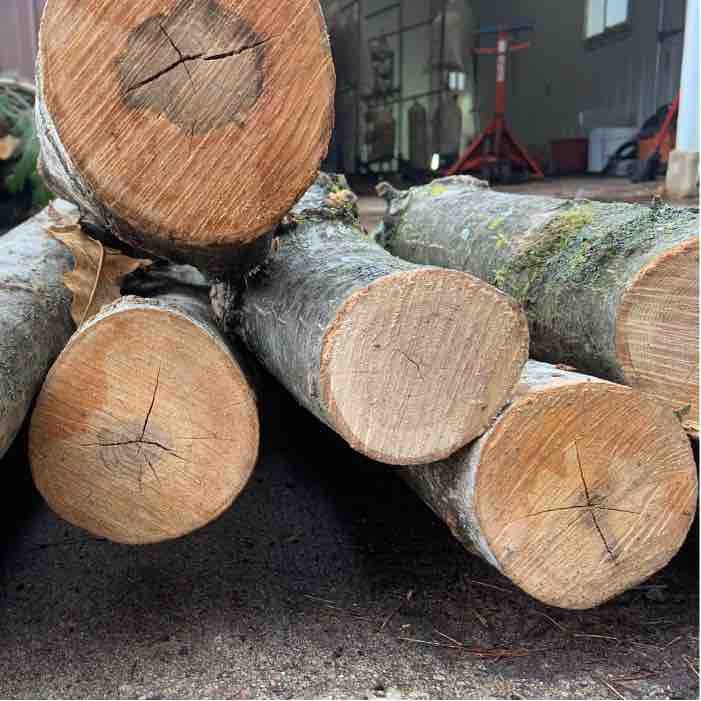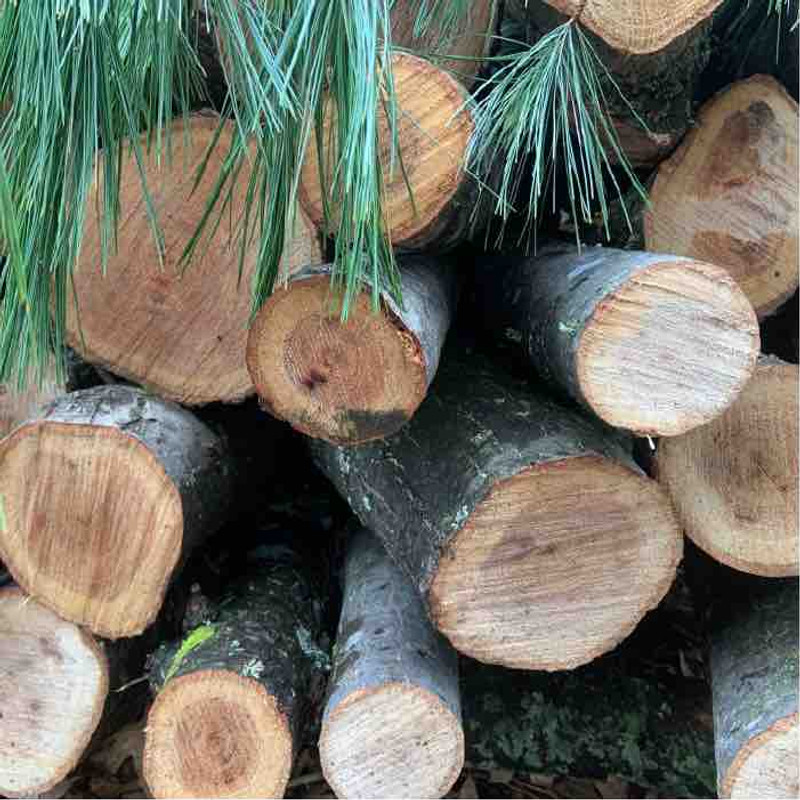Information on how long you need to wait after wood is cut for mushroom cultivation is all over the map. This is with good reason, we live in a big country with lots of climate zones and lots of different wood types, all which can affect the aging process.
A lot of people get worried that the logs they cut are getting past healthy once the logs have been sitting around for several weeks. But rest-assured that logs, when stored properly prior to inoculation can actually last for quite a long time. How long exactly can logs sit around before inoculation? Unfortunately the answer to this depends on where you're located and the time of the year you cut logs so we cannot give exact timelines, but this blog will give you some information so that you can make well-informed decisions on whether or not your logs are still fit to inoculate.
Log Health Basics
Mushroom mycelium needs 3 things to get a good start into colonizing a piece of wood. It needs air, water, and eventually wood which is the ultimate food source. To start though, the wood you have carefully selected from a living green tree is filled with water. The free water that is loosely bound in the wood needs to start to evaporate, or dry, leaving air space and room in which the mycelium can grow. Depending on where you live and when you cut can give you a big range of time from cutting to inoculation, say, from 2-4 weeks to even 6 months in very northern areas. Those of us who live in locations where our logs are covered with snow after cutting have a long wait for the wood thaw and to start drying. Those of us in the warm South have less time, maybe 2 months if the logs were winter cut.
The drying process starts immediately after cutting. But HOW LONG it takes to start emptying the wood cells of water depends on 3 main factors:
1. Temperature and humidity of the air around the log after cutting: warmer climates will dry wood faster than cold climates.
2. Bark thickness: Thick barked wood pieces take longer to dry than thin bark.
3. Wood species have variable drying rates, white oak takes longer to dry than say, red maple
So where you live and when you cut your wood makes a big difference in how long you can safely wait until you inoculate.
Examine Your Logs
How do you know if you waited too long to get your wood inoculated and the wood dried out too much? Fortunately, the wood itself can give us good clues. Feeling the heft of the wood, examining the color of the inner bark and dampness on the log ends give an experienced grower most of the clues they need to judge the condition of the log. For those of us newer growers, checking the appearance of the ends of your logs is the easiest way.
Wood dries from the outside in, but because the moisture is being pulled outward from the wetter center, the logs will start to crack from the inside out, from the pithy center to the bark. Look for hairline cracks from the center moving outward. Ideally, cracks should extend no more than 1/3rd to 2/3rds from the log's center. This can take weeks to up to months depending on where you live, when you cut the wood, how you store the wood, etc .

Perfectly cracked logs ends - ready for inoculation!

